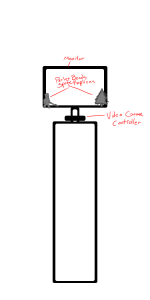http://www.metalgearsolid.net/features/yoji-shinkawa-interview
https://www.usgamer.net/articles/the-final-fantasist-a-conversation-with-yoshitaka-amano
This first interview is from a popular artist named Yoji Shinkawa. Shinkawa is mostly a concept artist for video games, and is namely known for his work on the Metal Gear Solid series. His artwork is noteworthy for its ethereal nature, lack of color, use of lighting, and use of heavy shadows. In the article, he gets fanmail asking his inspiration. He says that he has imitated so many styles of artwork and that his style is the end result of that. I found this interesting because I am at a point where i am sampling many styles of artwork, trying to find a style that suits me.
The interviewer from Konami Computer Entertainment Japan asks if there was anything Shinkawa paid special attention to during his original artwork. He replied, noting that he wanted to appeal to people’s imaginations. With the limitations of the hardware for the early consoles like the PS1 or PS2, there was no way to get the detail from the artwork to the actual in game models. This is such an interesting way to design, as it helps to bridge the gap between imagination and the actual in game experience.
The second interview focuses on another Japanese artist Yoshitaka Amano. He is known mostly for his work on video games and anime, most notably Final Fantasy and Vampire Hunter D. His style is also very ethereal and experimental. However, according to Amano, 90% of his work is contemporary art while the remainder goes to his games. Both styles of art draw from each other, but his concept art is more traditional concept art, while with his contemporary art, you may find him experimenting with painting on sheets of metal.
This experimentation is very interesting to me, as i still tend to experiment a lot with my artwork and styles. It also interests my that Amano’s art is mostly unshown, as his most popular artworks are concepts and the final product is a 3d model or pixel artwork. It would be interesting to try and translate some flowy artwork into a pixel medium to get a feel for what that is like.
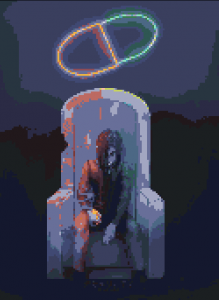

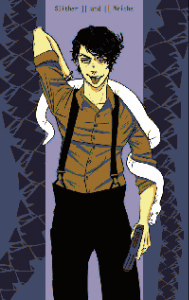
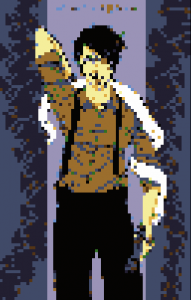
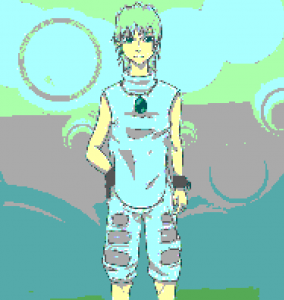

For the second part, i downloaded a program called Aesprite which can easily make images into sprites. I wanted to do this to some of my own artwork.
I thought this sort of deconstruction to artworks that i’ve made in the past was really interesting, partly because i worked so hard on these pieces and seeing them broken down into simple components is interesting. The last of the 6 even makes me see a different character and is inspiring me to to dry out drawing a new character. Another interesting point is the second of the 6, the neon pill looks even brighter than in the original. The art of pixels and spritemaking is very interesting in both deconstructing regular art and creating new art of its own.
